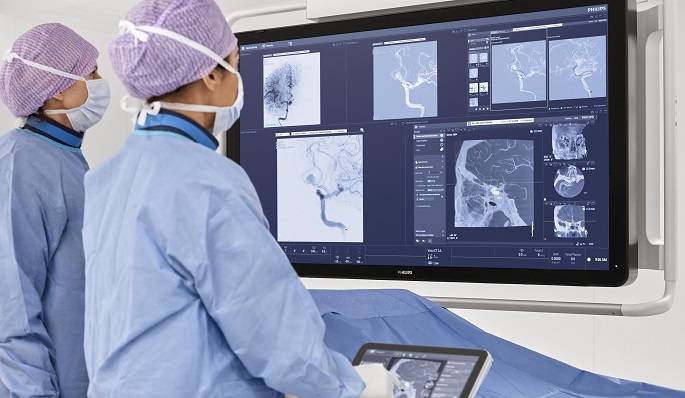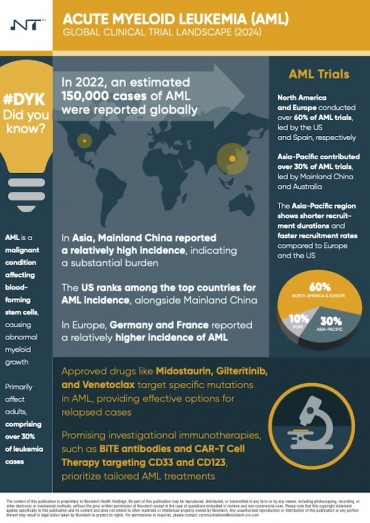Amsterdam, the Netherlands, Oct. 25 (Korea Bizwire) – Royal Philips (NYSE: PHG, AEX: PHIA), a global leader in health technology, today announced it will showcase the company’s latest advances to support the treatment of stroke patients at the 14th Annual World Stroke Congress (WSC 2022, October 26-29, Singapore). Philips’ end-to-end stroke care solutions help advance stroke care through early detection and an optimized workflow that reduces the time to treatment – a key factor in delivering the best stroke patient outcomes. To connect information, technologies, and people across the stroke care pathway, enabling care teams to work quickly and act decisively, Philips works closely with stroke care partners such as MedTech stroke care company Nicolab, who will join Philips at the 2022 World Stroke Congress.
Globally, one in four adults over the age of 25 will suffer a stroke in their lifetime [1], making it the leading cause of disability and the second leading cause of death worldwide [2]. The key to improving outcomes for stroke patients is to provide treatment as quickly as possible. Physicians in an emergency stroke setting are fighting the clock and under intense pressure to make optimal treatment decisions. Despite the imperative for speed, care teams currently lose valuable time due to gaps in communication, information, and access to stroke expertise.
“This World Stroke Day we are committed to improving stroke care,” said Angelique Balguid, Head of Marketing for Neurovascular Portfolio at Philips. “At each vital step, from early detection to treatment and recovery, we are collaborating with caregivers to speed up the stroke care pathway, because every minute matters for stroke patients. We aim to push the boundaries and set new standards, so that clinicians can act faster, improve outcomes, and grow access to care.”
Challenging the status quo of stroke care
On Wednesday, October 26, from 12:00 to 13:00 in Hall Summit 2 at this year’s World Stroke Congress, Philips will host a satellite symposium with talks from leading clinical stroke care experts, featuring Drs. Rotem Sivan-Hoffman, Head of the Radiology Department at Meir Medical Center (Haifa, Israel) and founder and Chief Medical Officer at CVAid, Prof. dr. Wim H. Van Zwam, PhD, Interventional Radiologist at Maastricht University Medical Center (Maastricht, The Netherlands), and Dr. Marc Ribó, PhD, interventional neurologist at University Hospital Vall d’Hebron, (Barcelona,Spain). The discussion will be moderated by Philips’ Angelique Balguid and explore a range of topics, including the early detection of stroke, new guidelines for reperfusion therapy, and the health-economic impact of a novel stroke pathway: the direct-to-angio-suite approach.
To learn more about Philips’ in-booth demonstrations, immersive experiences, and the full schedule of events click here.
Solutions across the stroke care pathway
Philips’ comprehensive stroke suite includes solutions for stroke monitoring and communication in ambulances, tele-stroke patient assessment, diagnostic imaging and analysis, image-guided therapy, neurological monitoring and assessment, and more. These solutions are aimed at improving diagnostic confidence and time to treatment, and helping reduce the risk of a second stroke.
- Philips Neuro suite is based on the company’s Image Guided Therapy System – Azurion. This suite is delivering the latest advances in interventional neuroradiology, such as the company’s industry-leading CT-like SmartCT 3D visualization and measurement tool, to assist interventional neuroradiologists with diagnosis and treatment.
. - Philips’ solutions leverage the advanced CT capabilities of the company’s Spectral CT 7500 spectral CT scanner to improve diagnostic capabilities for radiologists. The Spectral CT 7500 offers enhanced gray and white matter differentiation [3] and improved image quality for the detection of subtle hemorrhage [4] and may help in the detection of ischemic stroke through enhanced visualization of vascular anatomy.
- Philips is also integrating cloud-based, end-to-end, artificial intelligence-based [5] stroke triage, communication, and management solutions through StrokeViewer, via its partnership with Nicolab, aiming to improve patient outcomes by connecting care teams to optimize the overall stroke workflow.
- Supporting post-stroke remote telemetry, Philips Holter – ePatch – replaces the cumbersome setup of conventional Holter monitors with a small unobtrusive body sensor and patch adhered to the patient’s sternum for up to 14 days of continuous, high-quality electrocardiogram (ECG) recording for reliable diagnosis [6] of patients with atrial fibrillation (AF). Philips also provides an end-to-end service to support practices in the deployment of ePatch, enabling efficient workflows, enhancing the patient experience, and providing robust data analysis using cloud-based AI-enabled Philips Cardiologs software.
The future of stroke care
To learn more about Philips’ stroke care solutions and stroke management click here. A media backgrounder on how Philips is enabling the future of stroke care by connecting and integrating the patient journey can be found here.
Social responsibility
Earlier this week, the Philips Foundation announced it is exploring the possibilities of deploying Philips’ expertise in stroke care in underserved settings, as well as supporting several projects designed to identify best practices and scalable initiatives to create a bedrock for better stroke care, such as the support of the development of a new online platform called Collavidence to increase stroke research funding.
[1] World Stroke Organization
[2] Global Burden of Stroke, PubMed.
[3] Neuhaus V, et al. Improvement of image quality in unenhanced dual-layer CT of the head using virtual monoenergetic images compared with polyenergetic single-energy CT. Invest Radiol. 2017;52(8):1. DOI: 10.1097/RLI.0000000000000367.
[4] Gulko E, et al. Differentiation of hemorrhage from contrast enhancement using dual-layer spectral CT in patients transferred for acute stroke. Clin Imaging. 2021;69:75–78. DOI: 10.1016/j.clinimag.2020.06.046.
[5] We embrace the following formal definition of AI (source: HLEG definition AI)
[6] Patient will need to replace patch on day 5 of wear, or sooner as required
For further information, please contact:
Joost Maltha
Philips Global Press Office
Tel.: +31 6 10 55 8116
E-mail: joost.maltha@philips.com
About Royal Philips
Royal Philips (NYSE: PHG, AEX: PHIA) is a leading health technology company focused on improving people’s health and well-being and enabling better outcomes across the health continuum – from healthy living and prevention, to diagnosis, treatment, and home care. Philips leverages advanced technology and deep clinical and consumer insights to deliver integrated solutions. Headquartered in the Netherlands, the company is a leader in diagnostic imaging, image-guided therapy, patient monitoring and health informatics, as well as in consumer health and home care. Philips generated 2021 sales of EUR 17.2 billion and employs approximately 79,000 employees with sales and services in more than 100 countries. News about Philips can be found at www.philips.com/newscenter.
Attachments
- Philips Azurion with Neuro suite
- Philips Spectral CT7500 MR scanner
- Philips ePatch high-quality ECG recording
Source: Philips International B.V. via GLOBE NEWSWIRE








